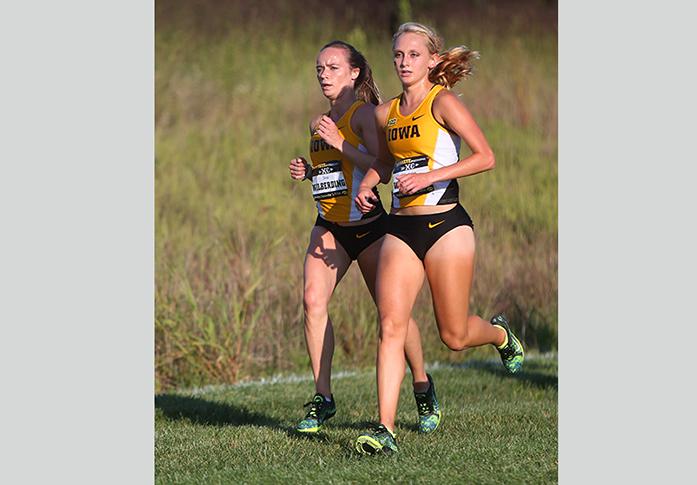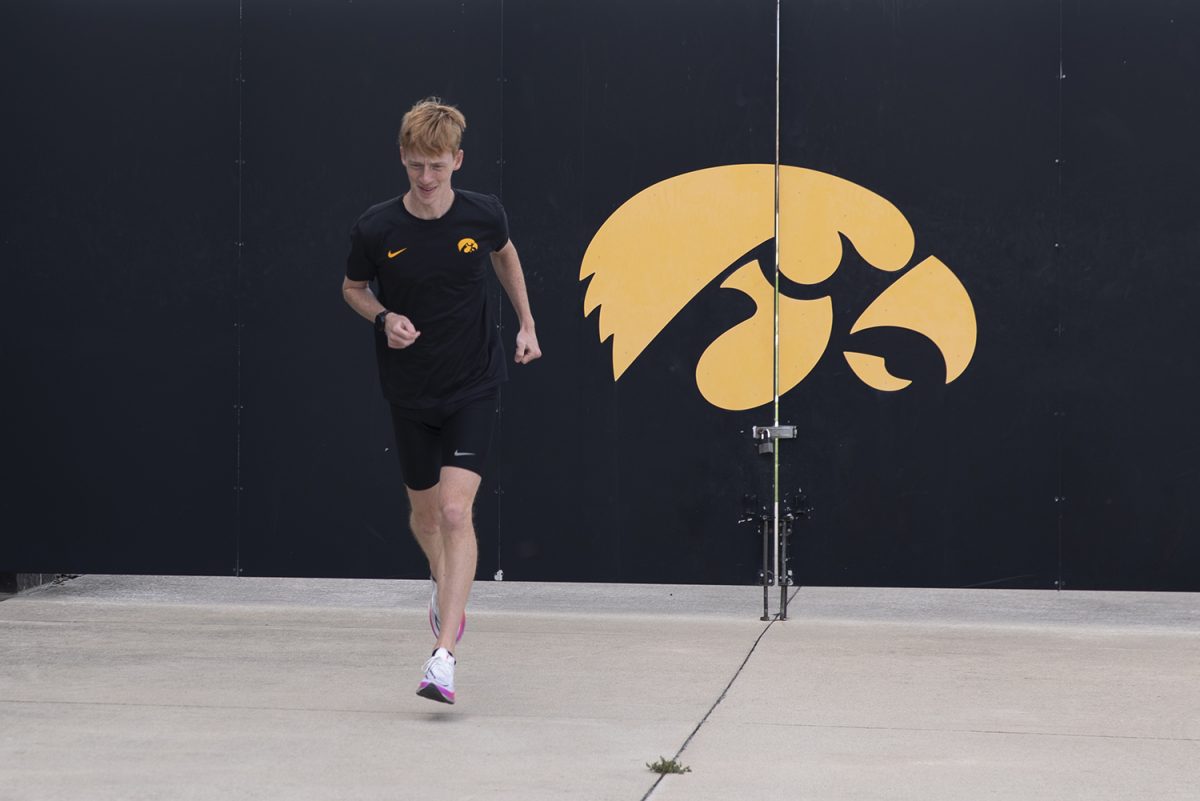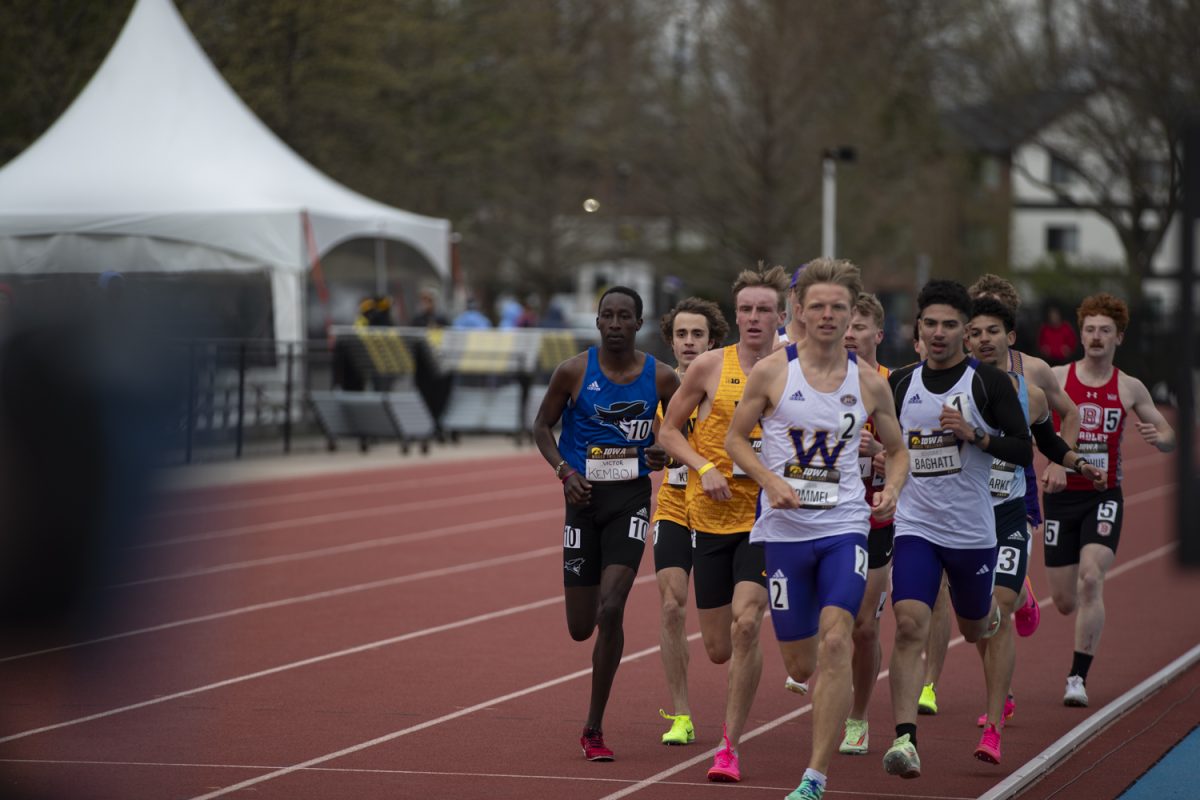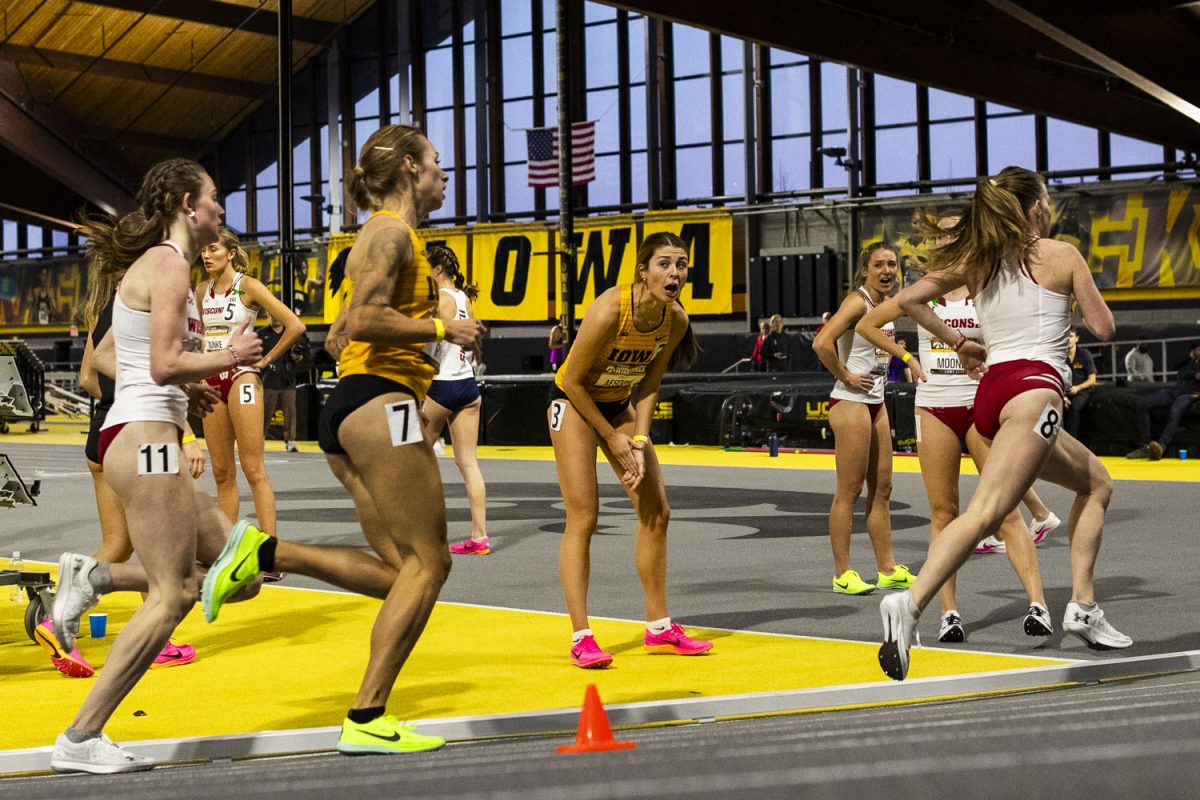By Jacob Miller
Instead of long runs at the park for cross-country, distance runners up the speed and intensity on the 200-meter track during the winter months.
Cross-country runners make a transition from long-distance runs such as 8Ks and 10Ks to shorter distances, such as 3Ks, the mile, and 800 meters for the indoor track season. The change in distance also means a change in training. During the cross-country season, training consisted more of longer runs and strength, whereas indoor focuses more on getting reps, getting quicker, and upping the intensity.
“It’s a very dramatic shift in the distances, and so they are very intense and very explosive,” said Randy Hasenbank, associate head coach. “When track rolls around, it’s a completely different game. We have less time to develop fitness, it should be established by now, and now, we start doing a lot of specific prep.”
For many cross-country runners, the transition to the indoor track is relatively easy, because they do not have to run as far. The only potential drawback in running a shorter distance is that the shorter distances are run at a higher intensity than during the cross-country season, but this transition is not bad for all.
“I’m always really excited when we transition from cross to indoor, just because I like track a lot, so I think it’s more fun,” senior Tess Wilberding said. “We do a lot more speed workouts, and we are with the whole team more.”
Typically, the transition to indoor was not always desirable for Hawkeyes on the old track, which did not have any banking, and that put a lot of pressure on the athletes as they ran the turns. Now, with a new banked track, there is less pressure on their bodies in the turns, and this has made the transition smoother.
“I like knowing the splits and not going over bumps and hills on the cross course,” sophomore Daniel Murphy said. “It kind of gives it a smoother ride because last year we had the indoor track, and it was kind of harder on your knees, harder on the turns with the torque of it, but when you get the bank in, it just kind of helps running faster easier.”
For most distance runners, cross-country and track are lifestyles. If successful, they transition from one season to the next and rarely have any break in between. As soon as cross-country ends, the indoor season begins. Indoor turns into the outdoor season, and when outdoor ends, cross-country starts up again shortly after. This never-ending cycle forces these distance runners to be in peak physical condition almost year-round.
“It is tough,” said Joey Woody, the Hawkeye director of track and field. “You’ve got a long season when most of them are starting their training in June to get ready for cross-country season, and if they’re having success in track, they’re going to go all the way to the following June, so it’s really a yearlong sport. It’s the mental side of just knowing and understanding that it is a long season … then you’re just committed to a full-time sport.”










